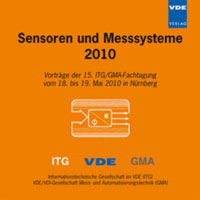Development of Nanomeasuring and Nanopositioning Machines
Conference: Sensoren und Messsysteme 2010 - 15. ITG/GMA-Fachtagung
05/18/2010 - 05/19/2010 at Nürnberg
Proceedings: Sensoren und Messsysteme 2010
Pages: 5Language: englishTyp: PDF
Personal VDE Members are entitled to a 10% discount on this title
Authors:
Jäger, Gerd (Ilmenau University of Technology, Faculty of Mechanical Engineering, Institute of Process Measurement and Sensor Technology, PO Box 100 565, 98684 Ilmenau, Germany)
Abstract:
The paper describes traceable nanometrology based on a nanopositioning machine with integrated nanoprobes. The operation of a high-precision long range three-dimensional nanopositioning and nanomeasuring machine (NMM-1) having a resolution of 0,1 nm over the positioning and measuring range von 25 mm x 25 mm x 5 mm is explained. An Abbe offset-free design of three miniature plan mirror interferometers and applying a new concept for compensating systematic errors resulting from mechanical guide systems provide very small uncertainties of measurement. The NMM-1-machine has been developed by the Institute of Process Measurement and Sensor Technology of the Ilmenau University of Technology and manufactured by the SIOS Meßtechnik GmbH Ilmenau. The machines are operating successfully in several German and foreign research institutes including the Physikalisch-Technische Bundesanstalt (PTB), Germany. The integration of several, optical and tactile probes makes the NMM-1-machine suitable for various tasks, such as large-area scanning probe microscopy, mask and wafer inspection, nanostructuring, biotechnology and genetic engineering as well as measuring mechanical precision workpieces, precision treatment and for engineering new material. Various developed probe systems have been integrated into the NMM-1-machine. The measurement results of a focus sensor, white light sensor and tactile nano probes are presented. Single beam-, double beam- and triple beam interferometers are installed into the NMM-1-machine in order to measure and control the six degrees of freedom.


